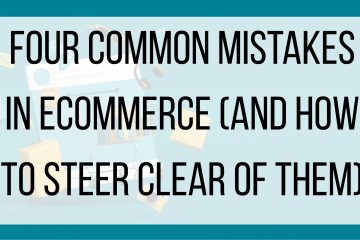Micro Conversions: What They Are And 5 Common Types

When you think about conversions for your brand, you probably think of customers making a purchase or scheduling a service from you. These types of conversions are called macro conversions, and tend to be the end goal when creating your strategy. Sometimes it is more beneficial for you to play the long game than to only focus on macro conversions, which is where micro conversions come in.
What Are Micro Conversions?
A micro conversion is a small step a user takes towards interest in your brand or product. While micro conversions are easy to overlook, they can help give you a lot of insight on customers that are curious about your brand, without willing to fully commit quite yet. For instance, say you stumble across BMT Micro’s blog. You are interested in the content, and want to subscribe (which you can do here!) but you are not ready to fully commit to becoming a vendor. This micro conversion helps give you a little bit more information, and keeps you connected without any pressure. Micro conversions point out people who are familiar with your brand and interested in learning more, which makes them an excellent demographic to target.
Types Of Micro Conversions:
Micro conversions can present in many forms, but some are more common than others. One of the biggest micro conversions to watch for is cart abandonment. Cart abandonment is when a customer adds something to their cart without completing the checkout process. There are a few steps you can take to encourage customers to complete the checkout process. First, make sure that your checkout page loads quickly and is easy to navigate. Next, be transparent with fees so that they are not caught off guard by the price while checking out. Lastly, offer a variety of payment options so that they can use their preferred method.
Another common micro conversion is when users comment on blog posts or social media. Getting comments might not seem like a big deal, especially if the user has not made a purchase from you, but it can help your overall brand image and show other users that you are a reputable and sought after brand. Whenever you can, interact with your audience in the comments to show them that you actually read what they are posting, and you care about their opinions.
Partially filling out forms is a sign that the shopper was interested in making a purchase from you, and either got distracted while filling out the form or it was too long and they lost interest. If you notice this happening frequently, there are several steps you can take to make the process easier for them. Start by reducing the number of fields they are required to complete and stick to essential information only. You can also mark essential fields with an asterisk, and leave other fields for them to choose to fill out or skip. The more simple you make it, the lower your abandonment rate will be.
Sharing your content or pages is a form of micro conversion that can be beneficial to you. If a potential customer is sharing your content, that means what you posted resonated with them, or they saw it and thought of someone they knew. Not only does this help spread the word about your business, but it builds your credibility.
Browsing web pages is a sure sign of micro conversions, especially if users look at more than one page or come back to visit frequently. Browsing indicates that they are interested in learning more about your company, checking out different products or pricing, and looking for your social media and contact information. Even if they do not make a purchase from you right away, browsing is a great indicator that you are on their radar and they are likely to return.
While micro conversions are not going to be your main goal, they are something to pay attention to and look at with a positive attitude. Every micro conversion is a reminder that a potential customer is interested in you, and is aware of your brand. Make it easy for these shoppers to come back, and gently encourage them to finalize their purchase without being pushy.



3 Comments
happy wheels · December 13, 2024 at 2:26 am
Especially the conversation section, I found a lot of interesting things in your blog. Considering the large number of comments that have been left on your posts, I can only assume that I am not the only one who is having a great time here. You should keep up the fine work.
rumble.com/pair · December 17, 2024 at 2:16 am
Truly inspiring.
Snow Rider 3D · December 19, 2024 at 2:35 am
I really like that suggestion.